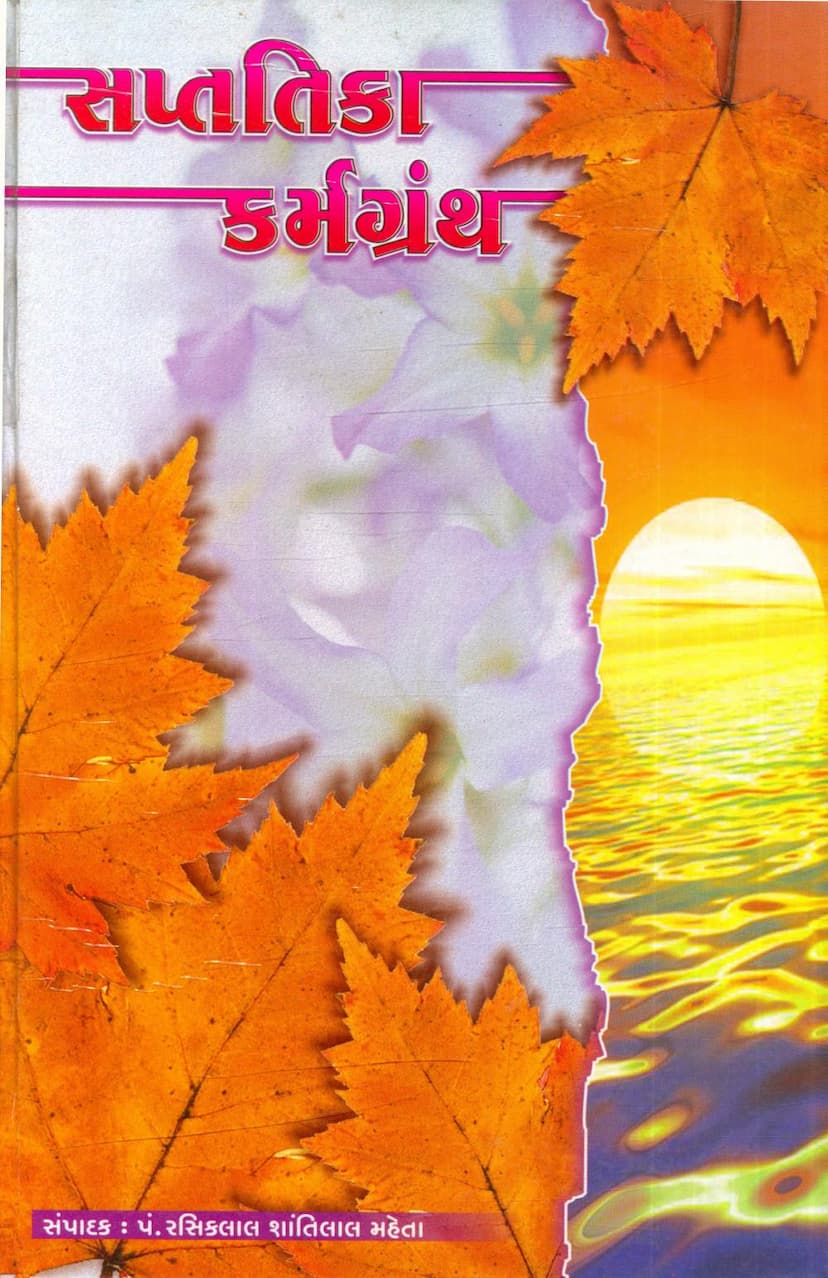Saptatika Karmgranth
Added to library: September 2, 2025

Summary
The text provided is a comprehensive Jain scripture titled "Saptatika Karmgranth" (सप्ततिका कर्मग्रंथम), authored by Rasiklal Shantilal Mehta and published by Aatmshreya Charitable Trust. The book focuses on the intricate details of Jain karmic theory, specifically the "Saptatika" or seventh karmic scripture, often referred to as the sixth Karmagranth in tradition.
Here's a summary of the key aspects and content presented in the text:
Core Subject:
The primary focus of the "Saptatika Karmagranth" is the detailed analysis of karma in Jainism, particularly the concepts of bandha (bondage), udaya (fruitition), and satta (dormancy) of the eight types of karmas. The text elaborates on the various bhangas (modes or variations) associated with these concepts across different stages of spiritual development.
Structure and Content:
The scripture is structured to provide a systematic understanding of karmic principles as explained in Jain Agamas and by ancient acharyas. It delves into:
- The Nature of Karma: It begins by stating that karma is the cause of the different states of souls in the endless cycle of birth and death (samsara). It contrasts the Jain view with other philosophical perspectives that attribute these states to divine will, destiny, or innate desires.
- The Saptatika's Place: The text highlights that this scripture, the Saptatika, is considered the sixth Karmagranth, building upon the five preceding ones. Its complexity and depth are acknowledged, requiring study under the guidance of spiritual preceptors.
- Detailed Karmic Analysis: The core of the text involves meticulously detailing the transitions (samvedha) between bondage, fruition, and dormancy for each of the eight primary karmas. This includes:
- Bandhasthanaka (States of Bondage): The specific conditions or stages under which a soul gets bound by a particular karma.
- Udayasthanaka (States of Fruition): The conditions under which the bound karma ripens and manifests its effects.
- Sattasthanaka (States of Dormancy): The conditions under which karma remains in a latent state, yet to ripen.
- Bhanga (Variations/Modes): The minute classifications and interrelations of these states, explaining how a particular state of bondage leads to specific states of fruition and dormancy, and how these can be influenced by factors like life-stream (jivasthanaka), spiritual stages (gunasthanaka), and modes of existence or inquiry (margaṇā).
- Application Across Stages: The analysis is systematically applied to:
- Jivasthanaka (Life-streams/Types of Beings): Covering fourteen stages of spiritual evolution of a soul.
- Gunasthanaka (Spiritual Stages): Detailing the karmic implications across the fourteen stages of spiritual progress from the lowest (mithyātva) to the highest (sāyogī kevalī).
- Margaṇā (Modes of Inquiry/Existence): The text extensively explores how karmic principles operate across 62 different modes of existence or inquiry, encompassing aspects like senses, intellect, mental states, passions, life-streams, stages of conduct, consciousness, and more.
- Specific Karma Analysis: The latter parts of the text provide detailed breakdowns for:
- Mohaniya Karma (Delusion Karma): This is given significant attention, outlining its ten types of bondage states, nine fruition states, and fifteen dormancy states, along with their complex interrelations based on bhavas (mental states), vedas (genders), and kashayas (passions). The interplay between these and the different gunasthanas is thoroughly examined.
- Nam Karma (Name Karma): This section is exceptionally detailed, cataloging the various bondage, fruition, and dormancy states for Nam Karma across different life forms (ekendriya, dīvendra, tri-indriya, catur-indriya, pachendriya) and spiritual stages. It meticulously lists the specific prakritis (sub-types) of Nam Karma that get bound, fructify, or remain dormant in each context, along with their numerous variations (bhangas). The text explains how factors like physical form, senses, mind, life-determining karma, and spiritual realization influence these karmic processes.
- Other Karmas: While Mohaniya and Nam karma receive the most extensive treatment, the text also touches upon the variations (bhangas) in Bandha, Udaya, and Satta for Jnanavaraniya, Darshanavaraniya, Vedaniya, Ayushya, and Gotra karma in relation to Jivasthanas and Gunasthanas.
Key Themes and Emphasis:
- Complexity and Detail: The book emphasizes the profound and subtle nature of karmic theory in Jainism, requiring diligent study and contemplation.
- Systematic Approach: It presents the information in a highly organized and analytical manner, breaking down complex concepts into manageable components and then showing their interrelations.
- Guidance of Preceptors: The publication acknowledges the importance of spiritual teachers (gurus) in understanding these profound topics.
- Knowledge Dissemination: The publication is presented as a service to the Jain community, making this complex knowledge accessible.
- Mathematical Precision: The text, particularly in its treatment of Mohaniya and Nam karma, displays a highly systematic and almost mathematical approach to classifying and detailing the vast number of permutations and combinations of karmic states.
Overall Purpose:
The "Saptatika Karmagranth" serves as a scholarly and detailed treatise on Jain karmic science. It aims to provide seekers and students of Jain philosophy with a deep and comprehensive understanding of how karma functions at various levels of existence and spiritual development, ultimately guiding them towards liberation from the cycle of birth and death. The extensive use of lists, numerical classifications, and detailed explanations underscores the text's commitment to thoroughness and clarity in explaining these fundamental Jain principles.